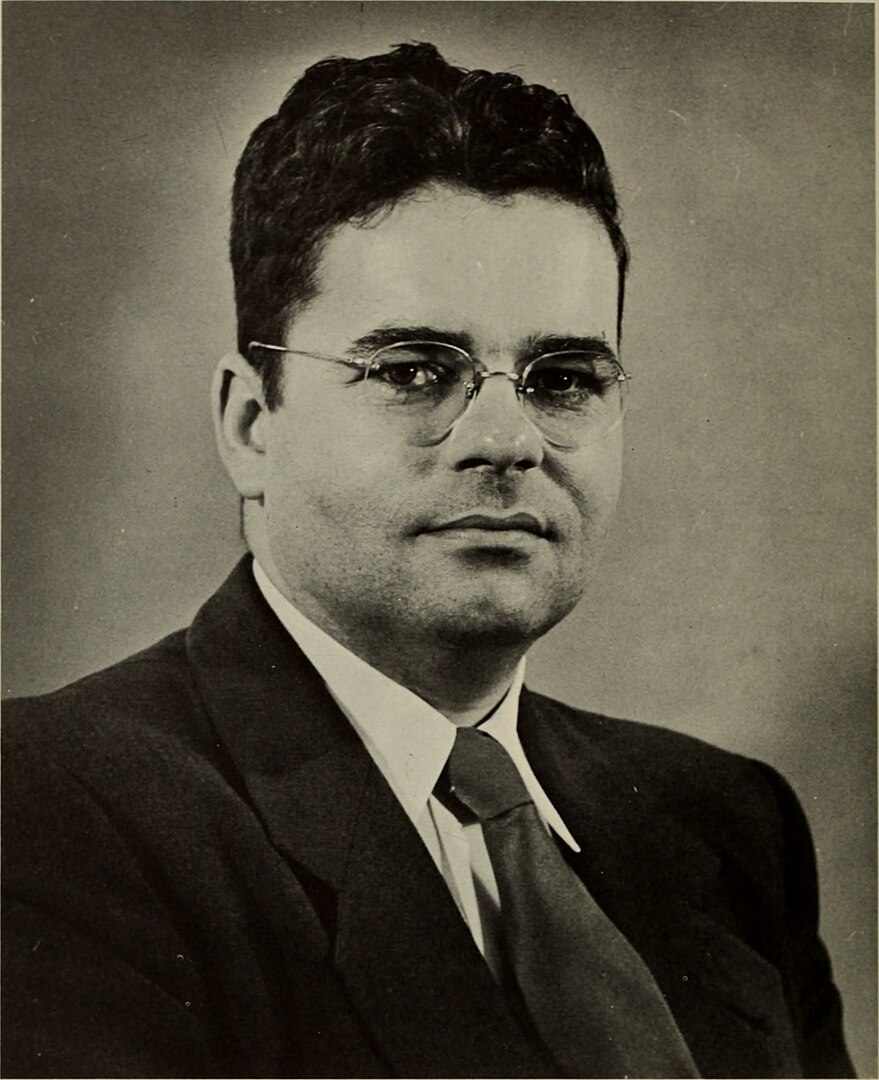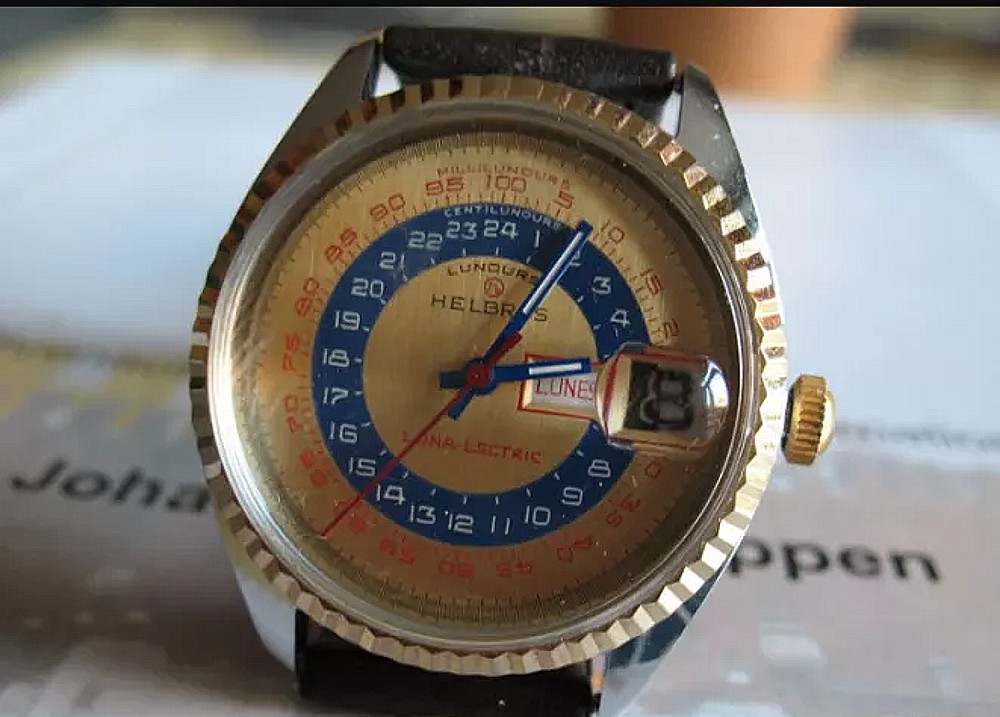What time is it on the moon? How a lunar clock debate led to an out-of-this-world timepiece

What time is it on the moon? As it turns out, that question is more difficult to answer than it would seem.
Back in November, a gathering of members from space organizations around the world met in the Netherlands and agreed that there is going to be a need to implement a proper lunar time zone — an internationally accepted common lunar reference time that all future missions can use to communicate and navigate with ease. "A new era of lunar exploration is on the rise, with dozens of moon missions planned for the coming decade," said Jörg Hahn, an advisor from the European Space Agency (ESA) for the lunar timekeeping project. To allow these lunar missions to coordinate and communicate with each other, Hahn stated that the moon "needs a shared clock" and a "common timing system."
Currently, the moon does not have an independent timekeeping system. Instead, previous missions to the moon used their time zone from Earth, ESA officials said. Astronauts would be synchronized with Houston, Moscow or whatever time zone in which the mission headquarters was located. But with more lunar missions on the horizon from space agencies around the world, ESA said, that system won't work.
While a standardized timekeeping system and, by extension, navigation system have been established for Earth, the same should be done for the moon.
Related: Does the moon need its own time zone? We may need to decide soon
Everything old is new again
But this topic is not new at all and in fact, was first considered by a well-known and highly regarded American astronomer more than half a century ago!
Moreover, not only did this astronomer devise a methodology for telling time on the moon, but using his calculations, a then well-known watch company actually developed a wristwatch that could actually provide at a glance the precise time on the moon.
Breaking space news, the latest updates on rocket launches, skywatching events and more!
The astronomer in question was Dr. Kenneth L. Franklin (1923-2007), who served as the chief scientist at New York's Hayden Planetarium from 1956 to 1984 and was co-credited with discovering radio emissions originating on Jupiter — the first detection of signals from another planet. He was often a local and national media figure, publishing many technical papers, as well as serving as a consultant for Scientific American, New York Times, NBC and CBS as well as writing astronomy articles for World Book Encyclopedia.
In 1970, during the high point of America's Apollo lunar landing program, Dr. Franklin developed a special formula for telling time on the moon. At a news conference at the Overseas Press Club in New York in April of that year, Dr. Franklin announced that:
"In the not-too distant future, we will have reasonably permanent bases on the moon and the men who man these bases will want a time system that corresponds to the position of the sun where they are. Therefore, we need a time system based on the rotation of the moon."
It sounds amazingly like what had been proposed by current-day space organizers last fall.
Of course, Dr. Franklin's 1970 prediction fell far short of reality. The last crewed lunar mission was in December 1972 and the "reasonably permanent bases on the moon" have yet to appear. But perhaps — if current space scientists are correct — those lunar bases will at long last materialize, to use Dr. Franklin's words, "in the not-to-distant future."
But what about the wristwatch?
A unique timepiece!
Helbros Watches Inc., was founded in 1913. The company, located at 2 Park Avenue in New York, was at its height in the 1950s but appears to have gradually declined after the death of its founder William Helbein in 1960. It was effectively closed by the mid-1970s.
But perhaps with such high interest in the Apollo moon program as the decade of the 1960s drew to a close, Helbros hit upon a concept that could have possibly increased enthusiasm and popularity for its company. It was at that same April 1970 news conference that a prototype of a lunar wristwatch was displayed, devised by the technical director at Helbros, Ross C. Kaskel, implementing Dr. Franklin's mathematical computations.
The moon watch that was unveiled was quite unlike the watches that people here on Earth rely upon, mainly due to the fact that it was based on the lunar synodic month or lunation. As the moon orbits the Earth, it is also revolving upon its axis. A complete rotation takes exactly the same time as one revolution — an average of 29.530589 days here on Earth.
Read more: Does the moon rotate?
Dr. Franklin then divided the lunation into 30 equal parts which he called "lunes," each of which is almost as long as one Earth day. Each lune was subsequently divided into 24 "lunours" or lune-hours, lasting close to one Earth-hour in length. But in place of minutes and seconds, the decimal system was used to divide a lunour into 100 "centilunours" each of which consisted of 10 "millilunours."
So, while a first glance, the face of the Helbros moon watch seemed to resemble a regular wristwatch, upon closer inspection the watch actually gave the time in lunours, centilunours and millilunours.
And while a standard calendar watch for Earth use would typically display the day of the month in a window on the right side of the watch face, on the moon watch the number of lunes would be shown instead. According to the system developed by Dr. Franklin, new moon corresponds to zero lune. A first quarter moon occurs at 7 lunes, 12 lunours. A full moon comes at 15 lunes and a last quarter moon coincided with 22 lunes, 12 lunours.
In order to compensate for the shorter time scale of a lunar synodic month versus a month measured on Earth, the hands of the Helbros battery-operated electric watch rotated roughly 1.6 percent faster compared to the hands of an Earth watch.
He proposed it first!
And to demonstrate that Dr. Franklin was a man far ahead of his time, he came to the same conclusion in 1970 that the space scientists in the Netherlands arrived at last November:
"The lunar time indicated on our Helbros watch may be called 'lunar mean solar time,' or Lunar Time (L.T.) in comparison to 'Universal Time' (U.T.), as the time at Greenwich is known to English-speaking astronomers. L.T. has been calculated for the Zero meridian on the moon, running through Sinus Medii, according to the lunar coordinate system adopted by the International Astronomical Union (IAU) in 1961. We thus propose that the moon be subdivided into local lunar time zones similar to the Standard Time Zones here on Earth. These will be based on 12° meridians centered on the zero meridian. They will be named unambiguously as 36° East Zone time, etc. although 'Copernican time,' 'West Tranquility time," and others may be adopted as convenient."
Final thoughts
After the lunar wristwatch was introduced, there was indeed a flurry of interest in it as Helbros had hoped. In fact, it was announced that four times each day, the correct "moon time" would be broadcast nationwide on 549 radio affiliates of the American Broadcasting Company. For many years on the second floor of the Hayden Planetarium was a glass case in which a moon watch (presumably the prototype) was displayed next to a letter of thanks to Dr. Franklin from then-President Richard Nixon; Helbros apparently had arranged to have the 37th President gifted with his own moon watch. In his letter, Mr. Nixon never asked Dr. Franklin why he was presented with a wristwatch that he could only use on the moon.
In time, interest in the watch faded, and with it, so did Helbros. Actually, the company seems to have either bought, or been bought, by Elgin Industries in the late 1960's, then become a stand-alone company again in the early 1970's. But sometime around 1974, they went into a temporary state of suspension, and the trademark was later acquired by Jules Jurgensen, then one of the greatest of vintage watch brands. But they too have since ceased operation with timepieces no longer in production.
It is not known just how many lunar wristwatches were manufactured and distributed by Helbros; unfortunately, the unique timepiece was possibly looked upon more as a novelty as opposed to a useful scientific device. I'm sure today, however, that any of the scientists who participated in last November's meeting in the Netherlands to ponder lunar timekeeping would be most interested in examining it.
Sadly, the whereabouts of the prototype is unknown.
And toward the end of his obituary, which appeared in the June 21, 2007 edition of the New York Times, it was noted that in 1970, Dr. Franklin "... invented a watch for moonwalkers that measures time in what he called 'lunations,' the period it takes the moon to rotate and revolve around the Earth."
"The watch has not yet become a big seller," the obituary added.
Joe Rao serves as an instructor and guest lecturer at New York's Hayden Planetarium. He writes about astronomy for Natural History magazine, the Farmers' Almanac and other publications. Follow us on Twitter @Spacedotcom and on Facebook.

Joe Rao is Space.com's skywatching columnist, as well as a veteran meteorologist and eclipse chaser who also serves as an instructor and guest lecturer at New York's Hayden Planetarium. He writes about astronomy for Natural History magazine, Sky & Telescope and other publications. Joe is an 8-time Emmy-nominated meteorologist who served the Putnam Valley region of New York for over 21 years. You can find him on Twitter and YouTube tracking lunar and solar eclipses, meteor showers and more. To find out Joe's latest project, visit him on Twitter.


